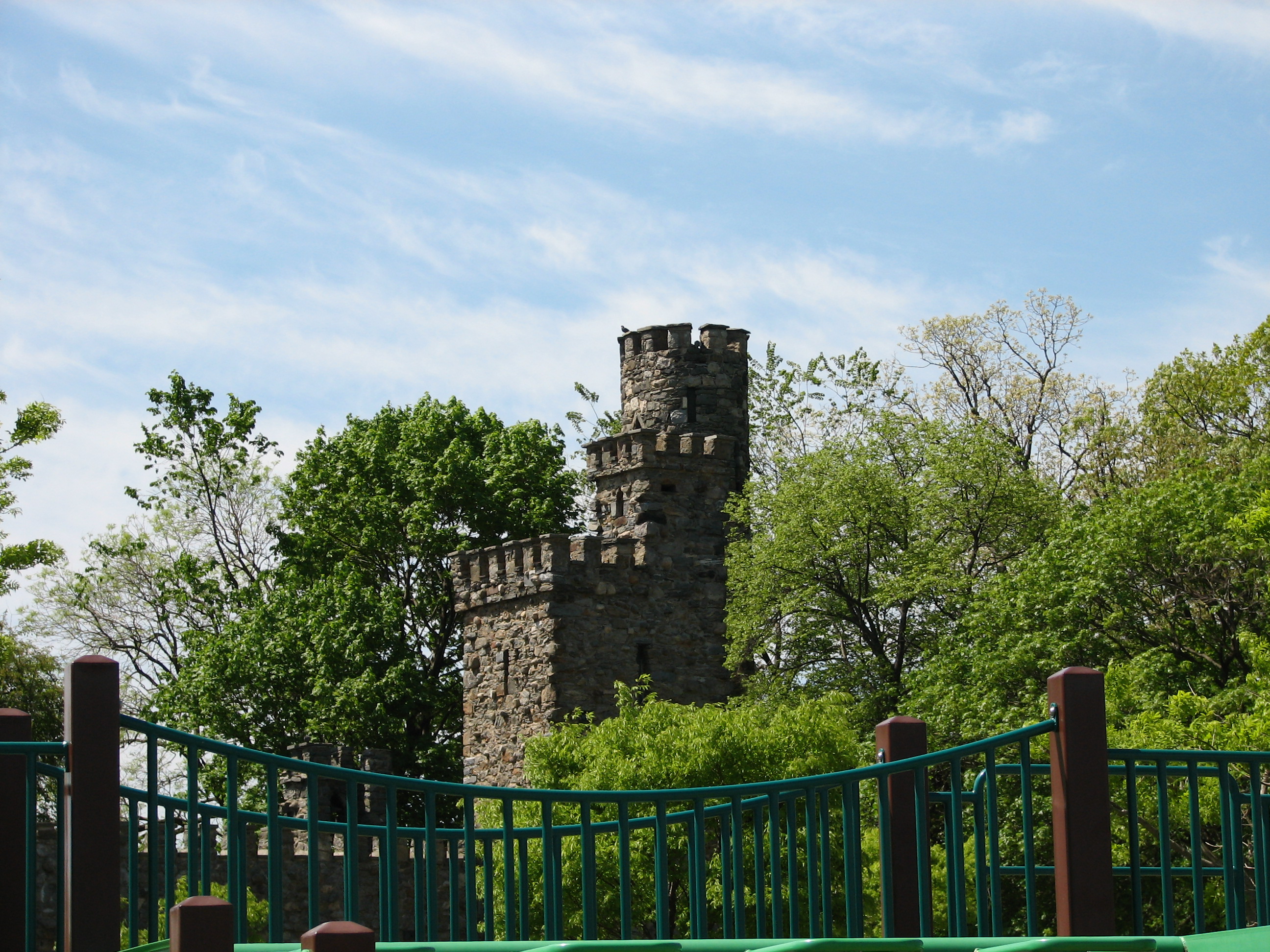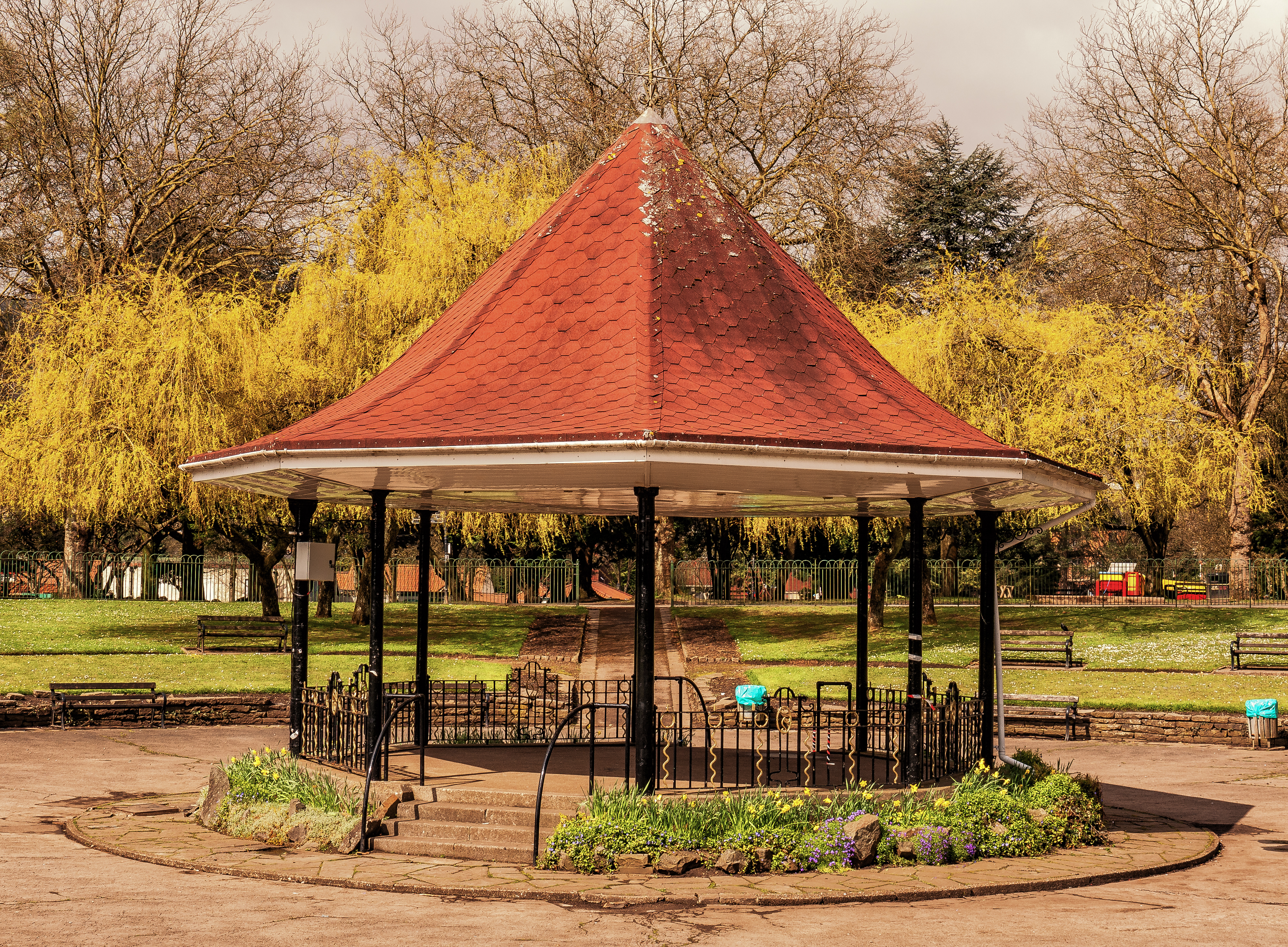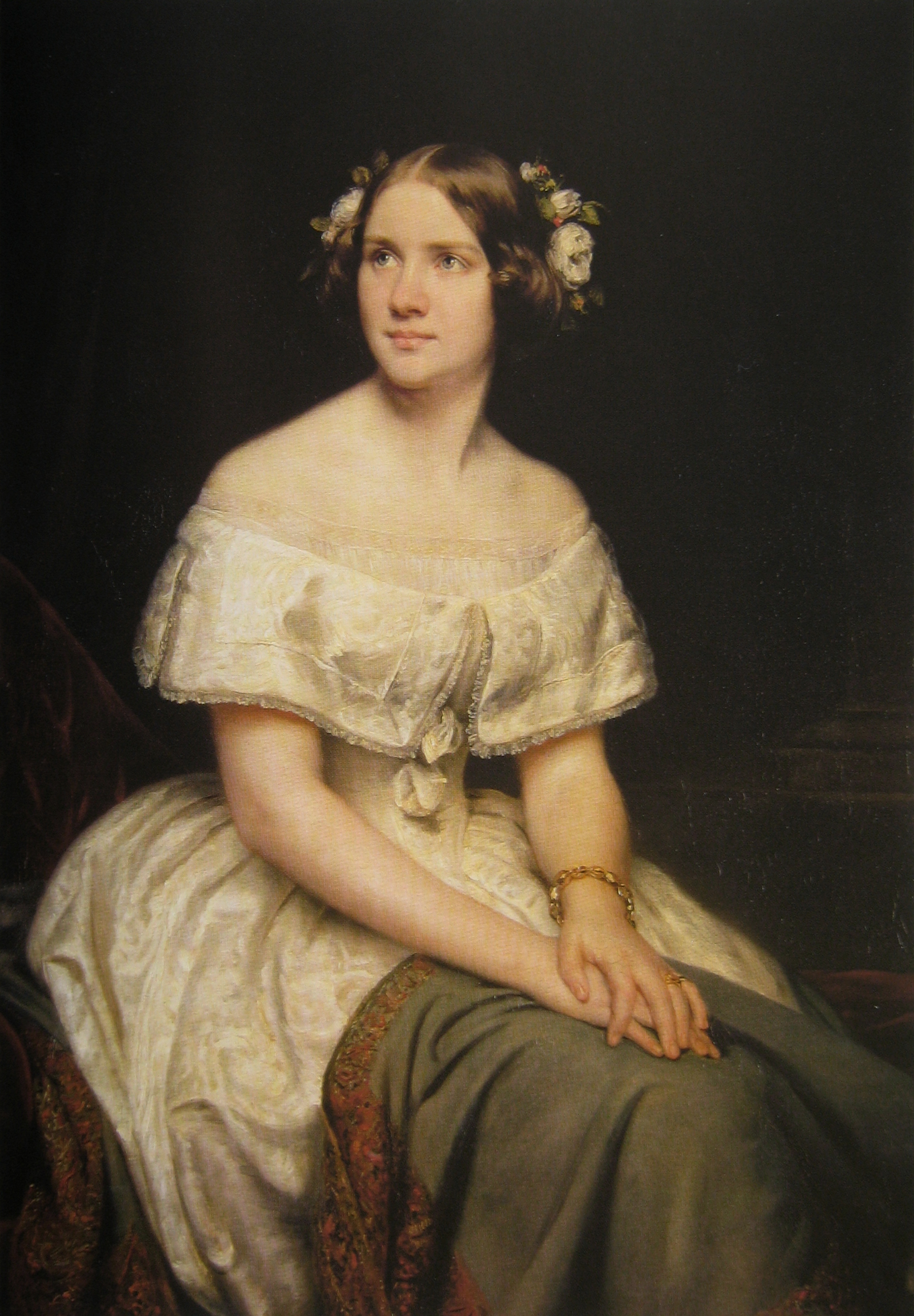|
Glen Island Casino
Starin's Glen Island was a summer resort in the community of New Rochelle in Westchester County, New York, developed by shipping magnate and U.S. Congressman John H. Starin in the late 1800s. Starin's resort, referred to as "America's pleasure grounds" was the first theme park in the country. The park's original design exhibited the five cultures of the western world on individual islands linked together with piers and causeways. The extreme popularity of the park resulted in a building boom in New Rochelle in the first decade of the twentieth century. The resort was located on Glen Island, in New Rochelle's Lower Harbor, just off of Long Island Sound. The island is situated between Davids, Neptune, and Travers islands in New Rochelle, and Hunter Island in nearby Pelham Bay Park, in the Bronx borough of New York City. Although now one island, the site originally consisted of one large main island in close proximity to at least four smaller nearby islands, a number of rocky outc ... [...More Info...] [...Related Items...] OR: [Wikipedia] [Google] [Baidu] |
New Rochelle, New York
New Rochelle (; older french: La Nouvelle-Rochelle) is a city in Westchester County, New York, United States, in the southeastern portion of the state. In 2020, the city had a population of 79,726, making it the seventh-largest in the state of New York. Some residents refer to the city as '' New Ro'' or ''New Roc City''. History Etymology and early history The European settlement was started by refugee Huguenots (French Protestants) in 1688, who were fleeing religious persecution in France (such as '' Dragonnades'') after the king's revocation of the Edict of Nantes. Many of the settlers were artisans and craftsmen from the city of La Rochelle, France, thus influencing the choice of the name of "New Rochelle". 17th and 18th centuries Some 33 families established the community of ''La Nouvelle-Rochelle'' () in 1688. A monument containing the names of these settlers stands in Hudson Park, the original landing point of the Huguenots. Thirty-one years earlier, the Siwanoy In ... [...More Info...] [...Related Items...] OR: [Wikipedia] [Google] [Baidu] |
Peninsula
A peninsula (; ) is a landform that extends from a mainland and is surrounded by water on most, but not all of its borders. A peninsula is also sometimes defined as a piece of land bordered by water on three of its sides. Peninsulas exist on all continents. The size of a peninsula can range from tiny to very large. The largest peninsula in the world is the Arabian Peninsula. Peninsulas form due to a variety of causes. Etymology Peninsula derives , which is translated as 'peninsula'. itself was derived , or together, 'almost an island'. The word entered English in the 16th century. Definitions A peninsula is usually defined as a piece of land surrounded on most, but not all sides, but is sometimes instead defined as a piece of land bordered by water on three of its sides. A peninsula may be bordered by more than one body of water, and the body of water does not have to be an ocean or a sea. A piece of land on a very tight river bend or one between two rivers is sometimes s ... [...More Info...] [...Related Items...] OR: [Wikipedia] [Google] [Baidu] |
Camera Obscura
A camera obscura (; ) is a darkened room with a aperture, small hole or lens at one side through which an image is 3D projection, projected onto a wall or table opposite the hole. ''Camera obscura'' can also refer to analogous constructions such as a box or tent in which an exterior image is projected inside. Camera obscuras with a lens in the opening have been used since the second half of the 16th century and became popular as aids for drawing and painting. The concept was developed further into the photographic camera in the first half of the 19th century, when camera obscura boxes were used to exposure (photography), expose photosensitivity, light-sensitive materials to the projected image. The camera obscura was used to study eclipses without the risk of damaging the eyes by looking directly into the sun. As a drawing aid, it allowed tracing the projected image to produce a highly accurate representation, and was especially appreciated as an easy way to achieve proper grap ... [...More Info...] [...Related Items...] OR: [Wikipedia] [Google] [Baidu] |
Bandstand
A bandstand (sometimes music kiosk) is a circular, semicircular or polygonal structure set in a park, garden, pier, or indoor space, designed to accommodate musical bands performing concerts. A simple construction, it both creates an ornamental focal point and also serves acoustic requirements while providing shelter for the changeable weather, if outdoors. In form bandstands resemble ornamental European garden gazebos modeled on outdoor open-sided pavilions found in Asian countries from early times. Origins During the 18th and 19th centuries this type of performance building was found in the fashionable pleasure gardens of London and Paris where musicians played for guests dining and dancing. They were later built in public spaces in many countries as practical amenities for outdoor entertainment. Many bandstands in the United Kingdom originated in the Victorian era as the British brass band movement gained popularity. Smaller bandstands are often not much more than gaze ... [...More Info...] [...Related Items...] OR: [Wikipedia] [Google] [Baidu] |
Steamboat
A steamboat is a boat that is marine propulsion, propelled primarily by marine steam engine, steam power, typically driving propellers or Paddle steamer, paddlewheels. Steamboats sometimes use the ship prefix, prefix designation SS, S.S. or S/S (for 'Screw Steamer') or PS (for 'Paddle Steamer'); however, these designations are most often used for steamships. The term ''steamboat'' is used to refer to smaller, insular, steam-powered boats working on lakes and rivers, particularly riverboats. As using steam became more reliable, steam power became applied to larger, ocean-going vessels. Background Limitations of the Newcomen steam engine Early steamboat designs used Newcomen atmospheric engine, Newcomen steam engines. These engines were large, heavy, and produced little power, which resulted in an unfavorable power-to-weight ratio. The Newcomen engine also produced a reciprocating or rocking motion because it was designed for pumping. The piston stroke was caused by a water jet i ... [...More Info...] [...Related Items...] OR: [Wikipedia] [Google] [Baidu] |
New York Harbor
New York Harbor is at the mouth of the Hudson River where it empties into New York Bay near the East River tidal estuary, and then into the Atlantic Ocean on the east coast of the United States. It is one of the largest natural harbors in the world, and is frequently named the best natural harbor in the world. It is also known as Upper New York Bay, which is enclosed by the New York City boroughs of Manhattan, Brooklyn, and Staten Island and the Hudson County, New Jersey municipalities of Jersey City and Bayonne. The name may also refer to the entirety of New York Bay including Lower New York Bay. Although the United States Board on Geographic Names does not use the term, ''New York Harbor'' has important historical, governmental, commercial, and ecological usages. Overview The harbor is fed by the waters of the Hudson River (historically called the North River as it passes Manhattan), as well as the Gowanus Canal. It is connected to Lower New York Bay by the Narrows, to ... [...More Info...] [...Related Items...] OR: [Wikipedia] [Google] [Baidu] |
Tugboat
A tugboat or tug is a marine vessel that manoeuvres other vessels by pushing or pulling them, with direct contact or a tow line. These boats typically tug ships in circumstances where they cannot or should not move under their own power, such as in crowded harbour or narrow canals, or cannot move at all, such as barges, disabled ships, log rafts, or oil platforms. Some are ocean-going, some are icebreakers or salvage tugs. Early models were powered by steam engines, long ago superseded by diesel engines. Many have deluge gun water jets, which help in firefighting, especially in harbours. Types Seagoing Seagoing tugs (deep-sea tugs or ocean tugboats) fall into four basic categories: #The standard seagoing tug with model bow that tows almost exclusively by way of a wire cable. In some rare cases, such as some USN fleet tugs, a synthetic rope hawser may be used for the tow in the belief that the line can be pulled aboard a disabled ship by the crew owing to its lightness ... [...More Info...] [...Related Items...] OR: [Wikipedia] [Google] [Baidu] |
Prussia
Prussia, , Old Prussian: ''Prūsa'' or ''Prūsija'' was a German state on the southeast coast of the Baltic Sea. It formed the German Empire under Prussian rule when it united the German states in 1871. It was ''de facto'' dissolved by an emergency decree transferring powers of the Prussian government to German Chancellor Franz von Papen in 1932 and ''de jure'' by an Allied decree in 1947. For centuries, the House of Hohenzollern ruled Prussia, expanding its size with the Prussian Army. Prussia, with its capital at Königsberg and then, when it became the Kingdom of Prussia in 1701, Berlin, decisively shaped the history of Germany. In 1871, Prussian Minister-President Otto von Bismarck united most German principalities into the German Empire under his leadership, although this was considered to be a "Lesser Germany" because Austria and Switzerland were not included. In November 1918, the monarchies were abolished and the nobility lost its political power during the Ger ... [...More Info...] [...Related Items...] OR: [Wikipedia] [Google] [Baidu] |
Daniel Webster
Daniel Webster (January 18, 1782 – October 24, 1852) was an American lawyer and statesman who represented New Hampshire and Massachusetts in the U.S. Congress and served as the U.S. Secretary of State under Presidents William Henry Harrison, John Tyler, and Millard Fillmore. Webster was one of the most prominent American lawyers of the 19th century, and argued over 200 cases before the U.S. Supreme Court between 1814 and his death in 1852. During his life, he was a member of the Federalist Party, the National Republican Party, and the Whig Party. Born in New Hampshire in 1782, Webster established a successful legal practice in Portsmouth, New Hampshire, after graduating from Dartmouth College and undergoing a legal apprenticeship. He emerged as a prominent opponent of the War of 1812 and won election to the United States House of Representatives, where he served as a leader of the Federalist Party. Webster left office after two terms and relocated to Boston, Massachusetts. H ... [...More Info...] [...Related Items...] OR: [Wikipedia] [Google] [Baidu] |
Jenny Lind
Johanna Maria "Jenny" Lind (6 October 18202 November 1887) was a Swedish opera singer, often called the "Swedish Nightingale". One of the most highly regarded singers of the 19th century, she performed in soprano roles in opera in Sweden and across Europe, and undertook an extraordinarily popular concert tour of the United States beginning in 1850. She was a member of the Royal Swedish Academy of Music from 1840. Lind became famous after her performance in ''Der Freischütz'' in Sweden in 1838. Within a few years, she had suffered vocal damage, but the singing teacher Manuel García saved her voice. She was in great demand in opera roles throughout Sweden and northern Europe during the 1840s, and was closely associated with Felix Mendelssohn. After two acclaimed seasons in London, she announced her retirement from opera at the age of 29. In 1850, Lind went to America at the invitation of the showman P. T. Barnum. She gave 93 large-scale concerts for him and then continued to ... [...More Info...] [...Related Items...] OR: [Wikipedia] [Google] [Baidu] |
Bowling Alley
A bowling alley (also known as a bowling center, bowling lounge, bowling arena, or historically bowling club) is a facility where the sport of bowling is played. It can be a dedicated facility or part of another, such as a Meetinghouse, clubhouse or dwelling house. History By the late 1830s, the Knickerbocker Hotel's bowling alley had opened, with three lanes. Instead of wood, this indoor alley used clay for the bowling lane. By 1850, there were more than 400 bowling alleys in New York City, which earned it the title "bowling capital of North America". Because early versions of bowling were difficult and there were concerns about gambling, the sport faltered. Several cities in the United States regulated bowling due to its association with gambling. In the late 19th century, bowling was revived in many U.S. cities. Alleys were often located in saloon basements and provided a place for working-class men to meet, socialize, and drink alcohol. Bars were and still are a principal fe ... [...More Info...] [...Related Items...] OR: [Wikipedia] [Google] [Baidu] |
Greenhouse
A greenhouse (also called a glasshouse, or, if with sufficient heating, a hothouse) is a structure with walls and roof made chiefly of Transparent ceramics, transparent material, such as glass, in which plants requiring regulated climatic conditions are grown.These structures range in size from small sheds to industrial-sized buildings. A miniature greenhouse is known as a cold frame. The interior of a greenhouse exposed to sunlight becomes significantly warmer than the external temperature, protecting its contents in cold weather. Many commercial glass greenhouses or hothouses are high tech production facilities for vegetables, flowers or fruits. The glass greenhouses are filled with equipment including screening installations, heating, cooling, and lighting, and may be controlled by a computer to optimize conditions for plant growth. Different techniques are then used to manage growing conditions, including air temperature, relative humidity and vapour-pressure deficit, in ord ... [...More Info...] [...Related Items...] OR: [Wikipedia] [Google] [Baidu] |

.jpg)







